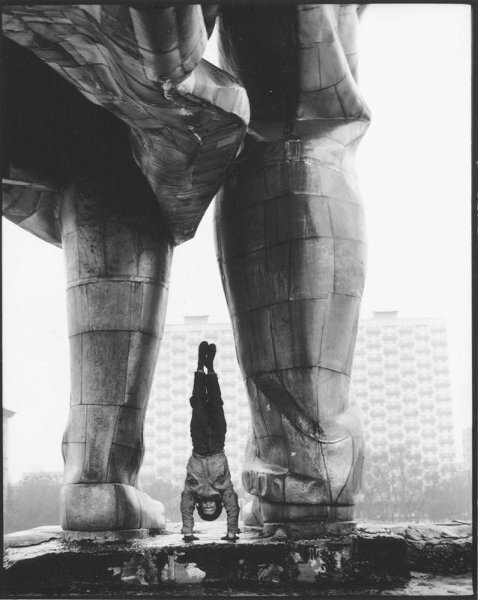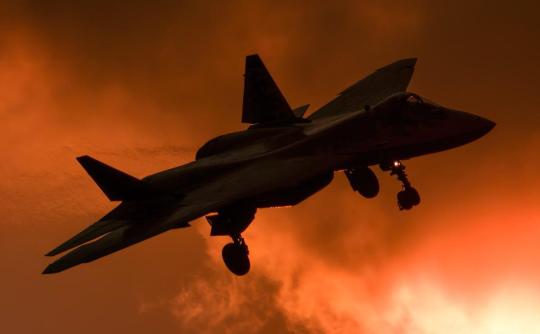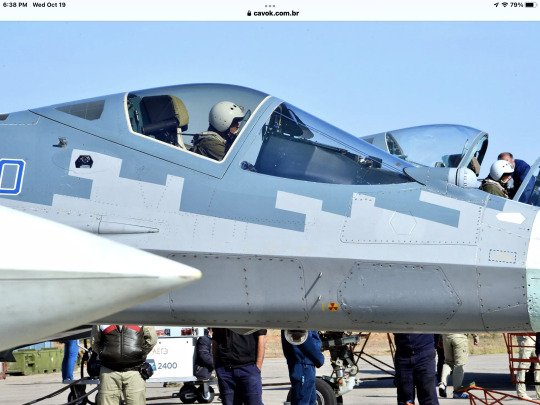#Sergey Borisov
Text

Altay Shaman with tambourine in front of a traditional dwelling Chaadyr, Altay (1910s)
Photography by Sergey Borisov (1859-1935)
#Россия#Russia#vintage#photography#алтайцы#алтайлар#алтай-кижи#altay people#Сергей Борисов#Sergey Borisov#русский фотограф#russian photographer#photographer#Алтай#Altay#russian#people#shaman#photo#nature#beauty#shamanism#vintage photography#1910s#20th century
106 notes
·
View notes
Text

Photography by Sergey Borisov
89 notes
·
View notes
Text

#sergey borisov#smiley face#beautiful girl#razor wire#barbed wire#bnw greatshots#old car#expressionism#expressive#expressive girl#tall girls#art photography
7 notes
·
View notes
Text
Kentavr
Kentavr (2023)
#KirillKemnits #YuriyBorisov #OlegEvteev #TimofeiFyodorov #SergeyGilyov #ArinaGorbachyova
Mehr auf:
Кентавр / CentaurJahr: 2023
Genre: Drama / Thriller
Regie: Kirill Kemnits
Hauptrollen: Yuriy Borisov, Oleg Evteev, Timofei Fyodorov, Sergey Gilyov, Arina Gorbachyova, Kseniya Kutepova, Ivan Mamonov, Alexey Medvedev, Kirill Melekhov, Anastasia Talyzina, Grigoriy Vernik …
Filmbeschreibung: Liza arbeitet nachts und das Taxifahren ist für sie ein Moment der gewünschten Ruhe. Der Fahrer Saša…

View On WordPress
0 notes
Photo

Sergei Borisov. Soviet model posing for a photoshoot, Moscow 1987.
78 notes
·
View notes
Photo




Lbische, Samara oblast
Photos: Sergey Borisov
46 notes
·
View notes
Text
youtube
Soyuz MS-24/70S, hatch opening, ingress, at 22:20BST, & welcome (15 Sep)
Expedition 70 (Soyuz MS-24/70S)
Soyuz CMR Oleg Kononenko Roscosmos
FE1 Nikolai Chub Roscosmos
FE2 Loral O'Hara NASA
Onboard Crew: Expedition 68-70
Soyuz MS-23/69S (all former crew of Soyuz MS-22/68S)
ISS CMRii Sergey Prokopyev Roscosmos (Soyuz CMR)
FE1 Dmitry Petelin Roscosmos
FE2 Dr Francisco Rubio US Army
Dragon Endurance C210/USCV-7
FE3 Lt Col Jasmin Moghbeli USMC (Dragon CDR)
FE4 Andreas Mogensen ESA (Denmark)(Huginn)(ISS70 CDR)
FE5 Dr Satoshi Furukawa JAXA
FE6 Konstantin Borisov Roscosmos
2 notes
·
View notes
Photo

Sergei Borisov - “Defile” || 1987
#ussr#soviet russia#soviet#moscow#black and white#black and white photo#photography#fashion photography#1987#1980s
26 notes
·
View notes
Text

Sergei Borisov
Сергей Борисов. Акробат. 1993
8 notes
·
View notes
Text

Soviet model posing for a photoshoot, Moscow 1987. (Picture taken by Sergei Borisov).
2 notes
·
View notes
Text






Altay,Russia (1900s/1910s)
Photography by Sergey Borisov (1859-1935)
#Россия#Russia#vintage#photography#Алтай#Altay#photo#russian#beauty#photos#nature#mountains#Сергей Борисов#Sergey Borisov#русский фотограф#russian photographer#photographer#vintage photography#1900s#1910s#20th century
50 notes
·
View notes
Text

Photography by Sergey Borisov
15 notes
·
View notes
Text

Su-57 fighter stood out in attacks in Ukraine, says Russian commander
Fernando Valduga By Fernando Valduga 10/19/22 - 19:00 in Military, War Zones
Russian Su-57 fighter. (Photo: Global Look Press)
The Russian Air Force has launched more than 8,000 missiles against Ukrainian targets since the invasion of Ukraine in February. Russian commander spoke about the actions that highlighted the Su-57.
"The special military operation proved the effectiveness of the air systems and air defense facilities available," according to the commander of the Joint Forces in the area of special military operations, General Sergei Surovikin, in an interview with the Rossiya TV channel 24.
"As for the operational quality, I want to highlight the 5th generation Su-57 multipurpose plane. Endowed with a wide range of weapons, he performed multifaceted tasks related to the neutralization of air and land targets," he said.

Operational-tactic, army and long-range aviation crews carried out more than 34,000 combat flights during the operation, he said in an interview published on the Russian Ministry of Defense website.
They launched more than 7,000 ammunition of guided air power, including the high-end Kinzhal hypersonic air missiles, which proved to be good at neutralization facilities. There was no enemy air defense system that would scare us. The highest accuracy was also demonstrated by strategic air-based cruise missiles.
For the first time, the use of Su-57 in Ukraine was reported in June by Yuri Borisov, who at the time held the position of deputy prime minister. “They repeatedly used both single outings and several aircraft in coordination, in the interaction of information, used aviation weapons,” Borisov said, adding that the fighters showed high efficiency.

Unmanned aviation carried out more than 8,000 flights, while attack drones destroyed more than 600 Ukrainian facilities.
He described the situation in the area of the special military operation as "tense".
The enemy maintains attempts to attack the positions of Russian troops. First, it concerns the direction of Kupyansk, Krasny Liman and Nikolayev-Krivoy Rog.
“We have data on the possible use of war methods prohibited by the Kiev regime near Kherson, on the preparation of a massive missile attack at the Kakhovka hydroelectric plant dam, as well as the launch of a massive attack of missiles and artillery indiscriminate in the city,” he added.
Tags: Military AviationRFSAF - Russian Federation Aerospace Force/Russian Aerospace ForceSukhoi Su-57 FelonWar Zones - Russia/Ukraine
Previous news
Fly the first production AW609
Fernando Valduga
Fernando Valduga
Aviation photographer and pilot since 1992, he has participated in several events and air operations, such as Cruzex, AirVenture, Dayton Airshow and FIDAE. It has works published in specialized aviation magazines in Brazil and abroad. Uses Canon equipment during his photographic work in the world of aviation.
Related news
MILITARY
U.S. Navy stops T-45C flights due to engine blade failures
19/10/2022 - 16:00
MILITARY
Myanmar would have purchased FTC-2000G jets from China
19/10/2022 - 14:00
EMBRAER
VIDEO: Portugal presents the Air Force's first KC-390 aircraft
19/10/2022 - 12:00
A future JASDF E-2D Advanced Hawkeye is unloaded at the port of the Iwakuni Marine Corps Air Station, Japan, on October 18, 2022. (Photo: U.S. Marine Corps)
MILITARY
New E-2D arrives in Japan for the Japanese Air Self-Defense Force
19/10/2022 - 08:17
MILITARY
SALITRE: Air Force aircraft from Brazil, Chile and Argentina participate in exhibition
19/10/2022 - 08:07
A solitary F-16 Fighting Falcon from the U.S. Air Force of the 14th Fighter Squadron takes off at Eielson Air Base, Alaska, at the beginning of RED FLAG-Alaska 23-1, on October 10, 2022. (Photo: US Air Force / Senior Aviator David Phaff)
INTERCEPTIONS
F-16 fighters intercept Russian Tu-95 bombers near Alaska, says NORAD
18/10/2022 - 23:42
home Main Page Editorials INFORMATION events Cooperate Specialities advertise about
Cavok Brazil - Digital Tchê Web Creation
Commercial
Executive
Helicopters
HISTORY
Military
Brazilian Air Force
Space
Specialities
Cavok Brazil - Digital Tchê Web Creation
3 notes
·
View notes
Text

"Korrozia Metalla" Soviet rock band. Photo by Sergei Borisov, 1989
4 notes
·
View notes
Text
MOSCOU - O Ministério da Defesa russo anunciou que até 2024, várias armas nucleares serão adicionadas ao inventário das forças estratégicas de Moscou, adiando uma série de metas que deveriam ter sido alcançadas no ano passado.
O vice-ministro da Defesa, Alexei Krivoruchko, afirmou em 26 de janeiro que a entrada em serviço do sistema de mísseis estratégicos Sarmat, dos bombardeiros Tu-160M e do submarino nuclear Borei-A Knyaz Pozharsky são as principais prioridades para 2024. Esses objetivos permanecem os mesmos desde dezembro de 2022, quando o Ministro da Defesa, Sergei Shoigu, anunciou os planos de armas nucleares para o ano seguinte durante um discurso no Conselho do Ministério da Defesa.
O desenvolvimento do sistema de mísseis Sarmat está atrasado há muito tempo e apenas um teste de voo bem-sucedido foi registrado. Isso se deve ao fato de que a produção e os testes do foguete estão sob a responsabilidade da Roscosmos, que enfrenta problemas de rentabilidade, dívidas acumuladas e prejuízos crescentes.
O CEO da Roscosmos, Yuri Borisov, afirmou em uma entrevista em dezembro de 2023 ao canal de televisão Rossiya 24 que a empresa perdeu 180 bilhões de rublos (2 bilhões de dólares) em receitas de exportação devido ao forte impacto das sanções.
O bloqueio do acesso a tecnologias e componentes ocidentais forçou a busca por alternativas, o que levou as empresas da Roscosmos a incorrerem em custos adicionais, à medida que se aproximam os prazos de entrega dos equipamentos.
A necessidade de reduzir custos levou a Roscosmos a demitir 17.000 funcionários entre 2019 e 2021 e reduzir pela metade o pessoal da sede em 2023.
Por falta de recursos, a Roscosmos está buscando investimentos em cooperação com países como Argélia e Egito, e em 2023 entrou pela primeira vez no mercado de empréstimos, planejando emitir títulos no valor de 50 bilhões de rublos.
Como resultado, os lançamentos orbitais diminuíram e estagnaram em 15 a 26 lançamentos por ano nos últimos oito anos. Os lançamentos de testes de mísseis balísticos intercontinentais russos baseados em terra também diminuíram de 6-10 em 2013-2017 para 2-5 em 2018-2023, de acordo com números disponíveis publicamente.
As subsidiárias da Roscosmos envolvidas na produção do Sarmat enfrentam problemas financeiros e de produção. Em particular, a fábrica Proton-PM, que produz o sistema de propulsão do míssil, "enfrentou acesso limitado a equipamentos, ferramentas e matérias-primas ocidentais importadas e um aumento na carga de juros sobre empréstimos", disse o diretor Ivan Krasnov em 2022.
Conforme declarado na revista corporativa da empresa, os funcionários compraram equipamentos de usinagem e fundição russos, bielorrussos ou chineses.
Além disso, vários altos executivos da Proton-PM foram presos no ano passado sob a acusação de desvio de 195 milhões de rublos em conexão com atualizações planejadas de equipamentos, informou a mídia regional.
O Chemical Automatics Design Bureau (CADB), que produz o segundo estágio do míssil Sarmat, está em estado de pré-falência. A empresa enfrenta uma escassez crônica de capital de giro.
Após o início da guerra, o dinheiro apareceu, mas embora os salários dos funcionários tenham sido pagos em dia novamente, outros contratados do CADB ainda estão tendo dificuldades para receber seus pagamentos, disse uma fonte da empresa ao Defense News sob condição de anonimato para discutir informações confidenciais.ções confidenciais. A gestão também não conseguiu modernizar as oficinas, como prometido no final de 2021, disse a fonte.
Os gerentes das fábricas têm vendido ativos não essenciais, como um local de produção e uma cantina, por 247,8 milhões de rublos, de acordo com a fonte.
Enquanto isso, a Planta de Aviação de Kazan (KAP), localizada em Kazan, região do Tartaristão, está empenhada na modernização dos bombardeiros Tu-160 existentes para o padrão Tu-160M, ao mesmo tempo em que produz novas aeronaves.
O governo já havia anunciado que a empresa havia preparado quatro Tu-160M modernizados, um dos quais foi entregue ao Ministério da Defesa em 2022. Em 2023, o Ministério da Defesa continuou a testá-lo em conjunto com a Tupolev Company, enquanto o restante das aeronaves continuam os testes de fábrica.
A Tupolev tem contrato para entregar 10 novos bombardeiros até 2027. O primeiro Tu-160M, um avião atualizado da era soviética, fez seus primeiros voos em janeiro e dezembro de 2022. O segundo iniciou testes de fábrica há apenas um ano, tornando improvável que os quatro bombardeiros atualizados possam ser entregues em 2023.
“A KAP produzia de 1 a 1,5 aeronaves por ano, ou seja, não é capaz de cumprir os planos do Ministério da Defesa”, disse Pavel Luzin, pesquisador sênior do Centro de Análise de Política Europeia, um think tank com sede nos EUA.
A empresa estaria atrasada na modernização de suas instalações de produção, que deveriam estar concluídas até 2020. Além disso, há o impacto das sanções ocidentais.
“Devido às sanções, há um problema de acesso às máquinas e ferramentas mais recentes, materiais compostos de alta qualidade, aço de alta resistência, componentes eletrônicos e outros materiais”, disse um professor do Instituto de Aviação de Moscou que preferiu permanecer anônimo. “Há substitutos na Rússia e na Ásia, mas a qualidade deixa muito a desejar. Muito tempo é gasto em melhorias e nem tudo pode ser encontrado na quantidade necessária.”
Além disso, a KAP enfrenta há anos uma escassez de trabalhadores. Um ano antes da guerra contra a Ucrânia, o ministro da Indústria e Comércio da região do Tartaristão, Albert Karimov, disse que 70% das empresas industriais da região precisavam de trabalhadores, um total de 26.000 pessoas. Entre as empresas que enfrentam maior escassez, Karimov citou a fábrica KAP.
Como resultado de atrasos contínuos, o Ministério da Indústria e Comércio da Rússia processou anteriormente a Tupolev em 5,8 bilhões de rublos como penalidade sob o contrato Tu-160M.
De acordo com relatórios da TASS, a agência de notícias estatal da Rússia, o submarino classe Borei-A Knyaz Pozharsky seria lançado em 2023, e mais dois submarinos deveriam ser instalados. Embora os especialistas não considerem o déficit de produção como gargalo do programa, o atraso pode afetar negativamente o programa de testes, já que o prazo para entrega do submarino da Marinha continua sendo dezembro de 2024.
“Os planos para a instalação de 11 e 12 submarinos da classe Borei-A não foram cancelados. Além disso, para as autoridades russas, é necessário manter a produção ativa na década de 2030, caso contrário, não será muito viável na atual situação político-econômica”, afirma Luzin, do CEPA.
A indústria de defesa russa tem enfrentado desafios significativos em sua modernização, com atrasos e escassez de trabalhadores afetando a produção de novos equipamentos militares. De acordo com fontes confidenciais, a gestão não conseguiu cumprir as promessas de modernizar as oficinas até o final de 2021.
Além disso, os gerentes das fábricas têm vendido ativos não essenciais, como um local de produção e uma cantina, por 247,8 milhões de rublos, de acordo com a fonte. Enquanto isso, a Planta de Aviação de Kazan (KAP), localizada em Kazan, região do Tartaristão, está empenhada na modernização dos bombardeiros Tu-160 existentes para o padrão Tu-160M, ao mesmo tempo em que produz novas aeronaves.
O governo já havia anunciado que a empresa havia preparado quatro Tu-160M modernizados, um dos quais foi entregue ao Ministério da Defesa em 2022. Em 2023, o Ministério da Defesa continuou a testá-lo em conjunto com a Tupolev Company, enquanto o restante das aeronaves continuam os testes de fábrica.
A Tupolev tem contrato para entregar 10 novos bombardeiros até 2027. No entanto, a empresa tem enfrentado atrasos na modernização de suas instalações de produção, que deveriam estar concluídas até 2020.
Além disso, o impacto das sanções ocidentais tem dificultado o acesso a máquinas e ferramentas modernas, materiais de alta qualidade e componentes eletrônicos.
Um professor do Instituto de Aviação de Moscou, que preferiu permanecer anônimo, afirmou que há substitutos na Rússia e na Ásia, mas a qualidade deixa muito a desejar. Isso resulta em atrasos e dificuldades na produção, já que nem todos os materiais necessários podem ser encontrados em quantidade suficiente.
Além disso, a KAP enfrenta há anos uma escassez de trabalhadores. Um ano antes da guerra contra a Ucrânia, o ministro da Indústria e Comércio da região do Tartaristão, Albert Karimov, afirmou que 70% das empresas industriais da região precisavam de trabalhadores, um total de 26.000 pessoas. Entre as empresas que enfrentam maior escassez, Karimov citou a fábrica KAP.
Como resultado dos atrasos contínuos, o Ministério da Indústria e Comércio da Rússia processou anteriormente a Tupolev em 5,8 bilhões de rublos como penalidade sob o contrato Tu-160M.
0 notes
Link
The last few months aboard the International Space Station (ISS) have been eventful. Expedition 70 is underway after two crew handovers, a bearing on a solar array rotary joint seized up, and a coolant leak on the Russian segment occurred. Currently, the ISS crew is preparing for Russian EVA-61 and US EVA-89 later this month. Expedition 70 officially began after the Soyuz MS-23 spacecraft left the Station with cosmonauts Sergey Prokopyev and Dmitry Petelin along with NASA’s Frank Rubio aboard. The Soyuz capsule landed safely in Kazakhstan on Sept. 27, touching down at 11:17 UTC on the steppe southeast of Dzhezkazgan. The touchdown signified the end of the crew’s extended mission aboard the Station, which lasted over a year instead of the planned six-month mission due to a coolant leak on Soyuz MS-22. NASA astronaut Rubio set a new U.S. space endurance record of 371 days, eclipsing Mark Vande Hei’s record of 355 days, which was set in March 2022, and becoming the first American to spend over one calendar year continuously in space. NASA astronaut and US Army Lt. Col. Frank Rubio smiling and waving after the Soyuz MS-23 landing in Kazakhstan. (Credit: Bill Ingalls/NASA) Frank Rubio, 47, born in Los Angeles and of Salvadoran descent, is a certified family physician and flight surgeon. He was also a U.S. Army helicopter pilot and combat veteran before joining the astronaut corps. Rubio became a member of NASA Astronaut Group 22 in 2017 and launched to the Station aboard Soyuz MS-22 on Sept. 21, 2022. This was his first flight to space. See AlsoExpedition 70 UpdatesISS SectionNSF StoreClick here to Join L2 A few months later, at 00:45 UTC on Dec. 15, 2022, the MS-22 spacecraft suffered a coolant leak during preparations for a Russian EVA, which necessitated a change in plans for the MS-22 crew. Nearly ten months after that coolant leak — ascribed to a micrometeoroid impact — and eight months after Progress MS-23 suffered a similar issue, a new coolant leak was discovered on the Nauka science module of the Russian segment of the ISS. The coolant leak was found to originate from one of two radiators on the Nauka module, which launched in 2021 after a decade-long series of delays. The leak was noticed by the ISS crew after 17:00 UTC on Oct. 9. Expedition 70 flight engineer and Crew-7 commander Jasmin Moghbeli radioed the news to Mission Control in Houston, saying “Yeah, there’s a leak coming from the radiator on MLM,” with MLM being an acronym for the Nauka module. Images of the Nauka module and the leak were taken and sent to the ground by Expedition 70 commander and Crew-7 member Andreas Mogensen, and these images will be analyzed by ground teams for more information on the leak. Controllers in Moscow have analyzed the situation and have said there will be no significant impacts to operations. Roscosmos issued a statement saying that the leak occurred on the external radiator circuit, which is a backup circuit on Nauka. They further stated that the primary thermal control circuit on Nauka is operating normally and the crew and the Station are not in danger. The leak has since ceased. Expedition 70 crew photo. From left to right: Nikolai Chub, Konstantin Borisov, Andreas Mogensen, Oleg Kononenko, Jasmin Moghbeli, Satoshi Furukawa and Loral O’Hara. (Credit: NASA) While working through the Nauka leak situation, the Expedition 70 crew, led by Danish ESA astronaut Andreas Mogensen, was also preparing for two spacewalks in October and another due before the end of the year. Along with commander Mogensen, NASA’s Jasmin Moghbeli, JAXA’s Satoshi Furukawa, and Roscosmos’ Konstantin Borisov arrived at the Station aboard the SpaceX Crew-7 mission, while Russian cosmonauts Oleg Kononenko and Nikolai Chub and NASA’s Loral O’Hara arrived aboard Soyuz MS-24. Astronauts Mogensen and O’Hara had been planning to conduct a spacewalk on Oct. 12 to install a new high-definition camera on the Station and gather microbial samples from the Station’s exterior. However, that EVA, now known as US EVA-90, has been pushed to no earlier than this coming December due to the Nauka coolant leak. Russian EVA-61 is scheduled for 18:30 UTC on Oct. 25 and is currently set to last around seven hours. Cosmonauts Kononenko and Chub, after leaving the Poisk airlock, will be tasked with installing a synthetic radar communications system, deploying a solar sail technology satellite, and replacing electrical connector patch panels on the Russian segment of the Station. Astronaut Jasmin “Jaws” Moghbeli is testing an EVA suit with the assistance of Andreas Mogensen and Satoshi Furukawa. (Credit: NASA) Following the Russian EVA, U.S. EVA-89, scheduled for Oct. 30 at 7:05 AM CDT (12:05 UTC), will begin from the Quest airlock module, after being delayed from Oct. 20. Astronauts Moghbeli, acting as EV1 with the red stripes, and O’Hara, acting as EV2 with the all-white suit, are scheduled to make their first spacewalks. They will remove an antenna electronics box and replace a trundle bearing assembly on the port solar array rotary joint (SARJ) of the Station’s truss. On Aug. 23, the ISS On-Orbit Status Report noted that the port SARJ’s trundle bearing number seven experienced a primary bearing seizure and stopped rotating. Though the secondary bearing in the assembly still worked, it was only certified for 30 days of continuous operation, and the SARJ had to be parked in a safe position to minimize the use of this bearing. The SARJ is critical to the Station’s operation because it rotates the large solar arrays mounted to the truss, once per orbit. The solar arrays on the truss, which provide most of the power to the complex, need to be rotated frequently to face the Sun for effective power generation, and the loss of this capability would seriously impact Station operations. Each 1161-kilogram SARJ has 12 trundle bearings, and these bearings straddle an inboard and an outboard race ring. These race rings are a little over three meters in diameter, and the inboard ring — facing the Station’s pressurized modules and central truss elements — is stationary, while the outboard ring rotates. The SARJ trundle bearings are designed for on-orbit replacement, and that capability proved handy during the Station’s assembly phase. Some weeks after the starboard SARJ was launched aboard STS-117 and activated in June 2007, anomalous vibrations and power draw readings were noted. Subsequent inspection of the joint during an EVA found that the joint had fine metal shavings across the outboard race ring surface and on a trundle-bearing roller housing. Astronauts Heidemarie Stefanyshyn-Piper (left) and Shane Kimbrough (right) working at the starboard SARJ during the second EVA of the STS-126 mission. (Credit: NASA) 11 trundle bearings on the joint were replaced and the outboard race ring was cleaned, then lubricated with grease during the STS-126 mission in November 2008. This repair, which needed a special tool developed for lubricating the race ring, dramatically improved the SARJ’s operation, and the joint could be operated normally. The port SARJ, which was noted as pristine during an inspection, also got treated with lubricant during STS-126 in a subsequent EVA. EV2 Loral O’Hara will be conducting the trundle bearing assembly replacement as well as an application of lubricant to the rotating race ring. EV1 Jasmin Moghbeli will be assigned to remove an H-fixture on the 2A Beta Gimbal Assembly on the port truss to prepare the site for a future solar array upgrade in the meantime. Moghbeli will also adjust a cable that is interfering with a camera assembly. Moghbeli and O’Hara are also scheduled to remove a failed communications box known as the Radio Frequency Group (RFG) on the starboard side of the Station. The box was unable to be removed during a prior EVA so there has been work done to figure out how to complete this task. The special wrench designed for the second attempt to remove the failed electronics box, shown during an Oct. 6 press conference. (Credit: NASA) This included the development of a special “RFG Wrench” to access the five aft wedge clamps holding the box to the stowage platform for the procedure. The astronauts will work together to attempt to free the RFG using the special tool and to stow it in the Quest airlock. The EVA is expected to last around six and a half hours if everything goes as planned. During the first weeks of Expedition 70, the Station crew filled the Cygnus NG-19 S.S. Laurel Clark with trash after unloading cargo from the spacecraft. The crew has also worked on various experiments, notably the Complement of Integrated Protocols for Human Exploration Research on Varying Mission Durations (CIPHER) suite of 14 human health studies. The CIPHER studies are being done on up to 30 astronauts on missions of various lengths from less than three and a half months to over eight months in space. Drawing of the current complement of visiting vehicles attached to the Station. They are set to be joined by CRS-29 next month. (Credit: NASA) The Expedition 70 crew is also preparing for the launch of another cargo spacecraft, a SpaceX Cargo Dragon, on the CRS-29 mission, which is scheduled for launch no earlier than Nov. 5, at 10:01 PM EST (03:01 UTC). This flight will include an atmospheric wave experiment and a modem for a laser communications experiment along with other experiments, food, supplies, and equipment. (Lead image: The ISS and Canadarm2 soar 266 miles above the coast of Argentina. Credit: NASA) The post ISS Roundup: Expedition 70 underway, Rubio’s record stay in space, technical issues, upcoming EVAs appeared first on NASASpaceFlight.com.
0 notes